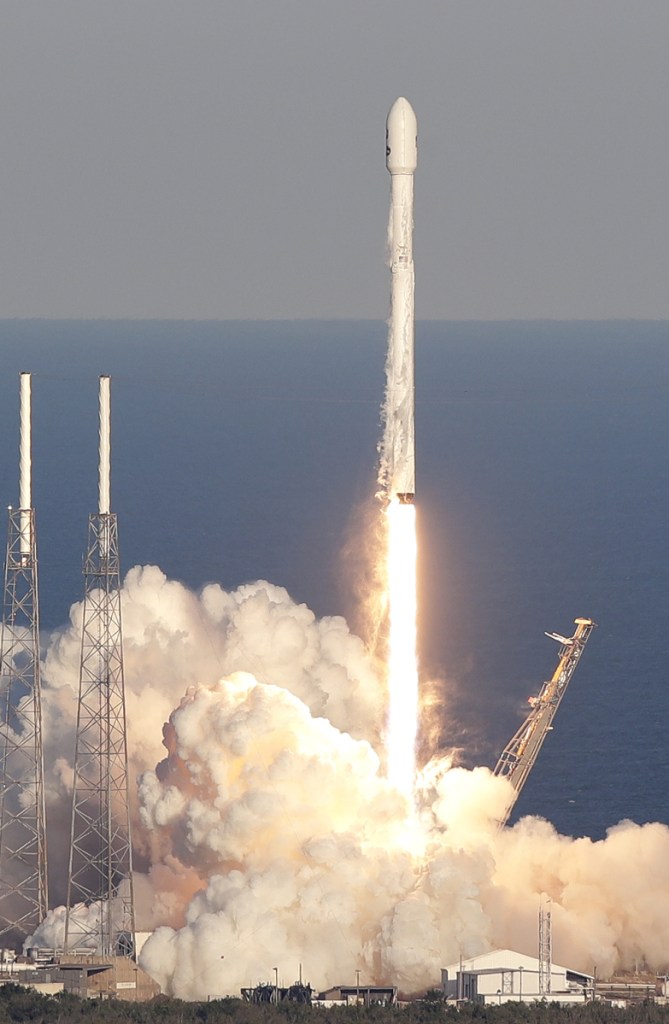CAPE CANAVERAL, Fla. — NASA’s Tess spacecraft embarked Wednesday on a quest to find new worlds around neighboring stars that could support life.
Tess rode a SpaceX Falcon rocket through the evening sky, aiming for an orbit stretching all the way to the moon.
The satellite – the Transiting Exoplanet Survey Satellite, or Tess – will scan almost the entire sky for at least two years, staring at the closest, brightest stars in an effort to find and identify any planets around them. Hundreds of thousands of stars will be scrutinized, with the expectation that thousands of exoplanets – planets outside our own solar system – will be revealed right in our cosmic backyard.
Rocky and icy planets, hot gas giants and, possibly, water worlds. Super-Earths between the sizes of Earth and Neptune. Maybe even an Earth twin.
“The sky will become more beautiful, will become more awesome” knowing there are planets orbiting the stars we see twinkling at night, said NASA’s top science administrator, Thomas Zurbuchen.
Discoveries by Tess and other missions, he noted, will bring us closer to answering questions that have lingered for thousands of years.
Does life exist beyond Earth? If so, is it microbial or more advanced?
But Tess won’t look for life. It’s not designed for that. Rather, it will scout for planets of all sorts, but especially those in the so-called Goldilocks or habitable zone of a star: an orbit where temperatures are neither too cold nor too hot, but just right for life-nourishing water.
Tess is the successor to NASA’s Kepler Space Telescope.
Send questions/comments to the editors.



Success. Please wait for the page to reload. If the page does not reload within 5 seconds, please refresh the page.
Enter your email and password to access comments.
Hi, to comment on stories you must . This profile is in addition to your subscription and website login.
Already have a commenting profile? .
Invalid username/password.
Please check your email to confirm and complete your registration.
Only subscribers are eligible to post comments. Please subscribe or login first for digital access. Here’s why.
Use the form below to reset your password. When you've submitted your account email, we will send an email with a reset code.